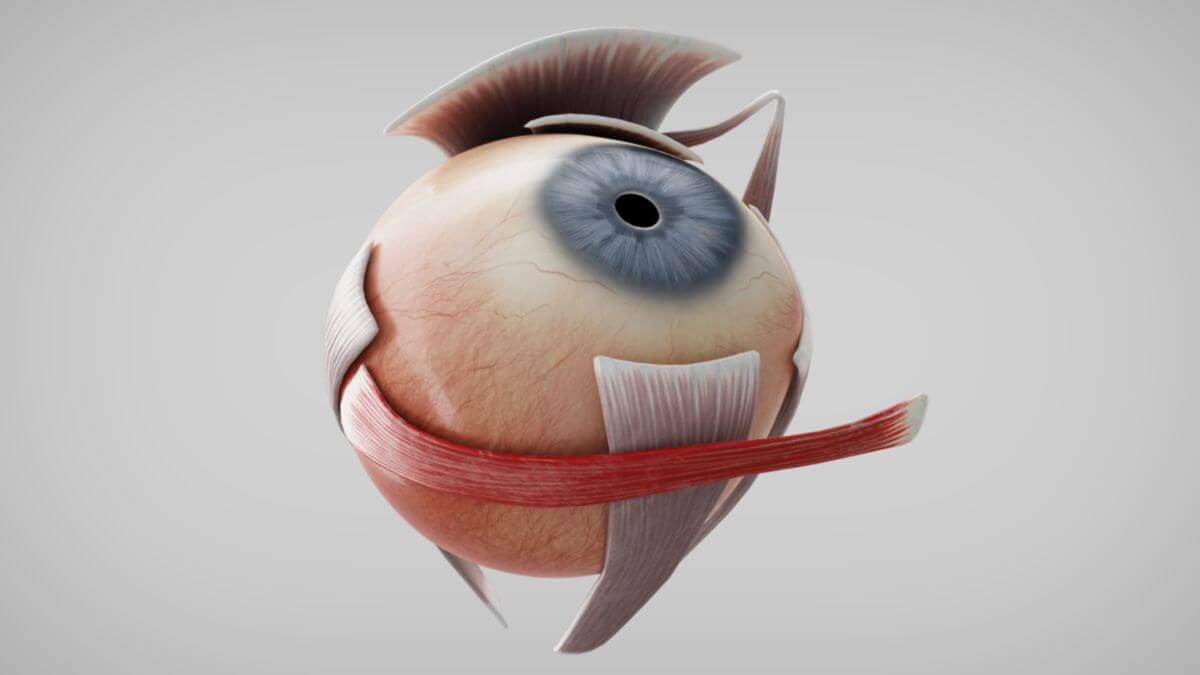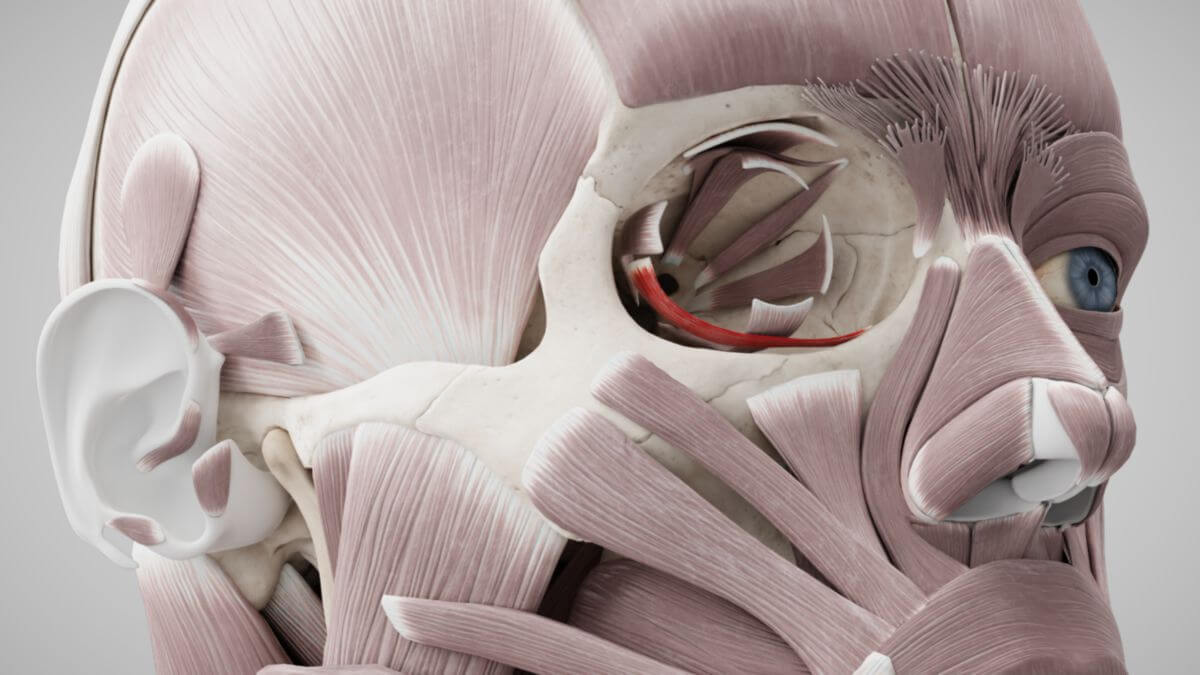Corpus: Inferior oblique muscle
1. Definition
The inferior oblique muscle is a skeletal muscle that is part of the extraocular muscles responsible for eye movement.
2. Course
The inferior oblique muscle originates from the anterior lacrimal crest of the maxilla near the orbital floor. From there, it runs laterally in an arc around the eyeball, crossing the inferior rectus muscle. It is separated from the periorbita by fatty tissue. The muscle inserts on the sclera in the posterior, lower, and temporal quadrant of the eyeball with a fan-shaped tendon. Its fascia extends into Tenon's capsule.
3. Innervation
The inferior oblique muscle is innervated by the inferior branch of the oculomotor nerve (cranial nerve III).
4. Blood supply
The muscle receives its arterial blood supply from the orbital branches of the infraorbital artery.
5. Function
The primary function of the inferior oblique muscle is to rotate the eyeball upwards. It also assists in abduction (moving the eye outward) and rotates the upper half of the eye outward (extorsion). When the eye is in an adducted position, it helps elevate the eye.
6. Clinical examination
During a clinical examination, the function of the inferior oblique muscle is assessed by asking the patient to look upwards and inwards while the eye is in an adducted position.





